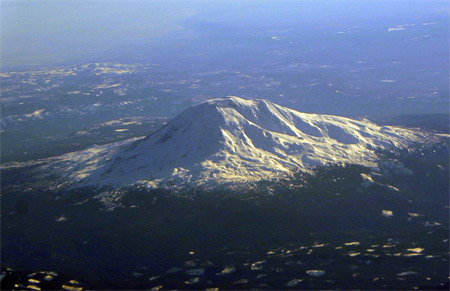
Mount St. Helens, a large volcano located about 100 miles south of Seattle, Washington, was in a bad mood on the morning of May 18, 1980. I mean, worse than normal, even. Perhaps it had something to do with the weather that day, which was gorgeous in a way that only springtime in the Cascades can pull off. Many people, when they're in a bad mood, don't want to see sunshine, daffodils, and bunny rabbits, and the same goes for large volcanoes.
Actually, Mount St. Helens' rage had been building steadily for weeks, in the form of hot magma welling up underneath its surface. And at 8:32 am that day, an earthquake occurred on Mount St. Helens that caused a huge slab of the mountain to slide away, exposing the molten rock and causing a cataclysmic explosion that blew away the top 2300 feet of the formerly 9500 foot peak.
BOOM. It was the first time she'd blown her top since the 1850s, and it was a doozy. A massive plume of volcanic ash was catapulted tens of thousands of feet into the air, later falling on 11 neighboring states. 57 people were killed. The area around Mount St. Helens was stripped bare by lava flows and poisonous volcanic mudslides. All the animals that hadn't listened to their inner sense about the catastrophe that was about to happen also perished.
But looking at Mount St. Helens today, she looks pretty peaceful. Sure, she lost her head, but that's to be expected from time to time with people, and also with volcanoes. Yep, she looks pretty calm these days, although there was a small eruptive episode a few years back. Nothing major, mind you, just a few steam plumes that brought the CNN crews in for a few days.
You have to wonder, has Mount St. Helens matured and learned from her mistakes? Or, have the authorities been keeping her on a steady dose of "Volcano Prozac" to prevent a recurrence?
volcano prozac...thats a new one
ReplyDelete